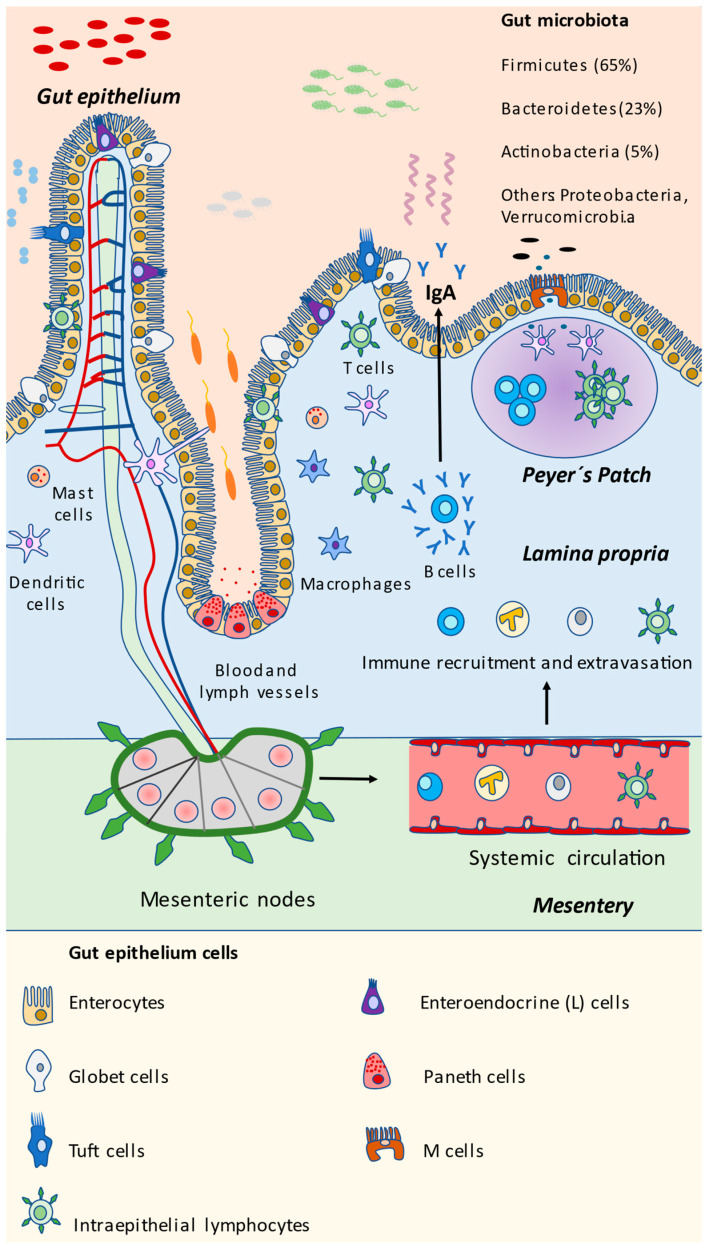Figure 1.
Microbial and eukaryotic components of the gut. As represented in the scheme, gut mucosa is a highly dynamic structure in which microorganisms and epithelial and immune cells are interacting continuously. The gut microbiota is mainly composed of the Firmicutes phylum, followed by Bacteroidetes, Actinobacteria, and other bacteria that are less abundant but equally important, including Proteobacteria and the Verrucomicrobia Akkermansia muciniphilla. Immune detection and response may be assessed at the local Peyer’s patch present in the small intestine, or through mesenteric nodes, activating immune cells and accessing the gut through the bloodstream, finally promoting the release of IgA by plasmatic B cells. Other cells may aid in the capture of microbial antigens, coordinating the immune response, including tuft cells, M cells and even intraepithelial lymphocytes. Paneth cells prominently act through the release of antimicrobial compounds. Enterocytes and globet cells play a key role in maintaining the intestinal barrier, whereas enteroendocrine cells produce certain products that are essential for metabolism and the individual’s health.

